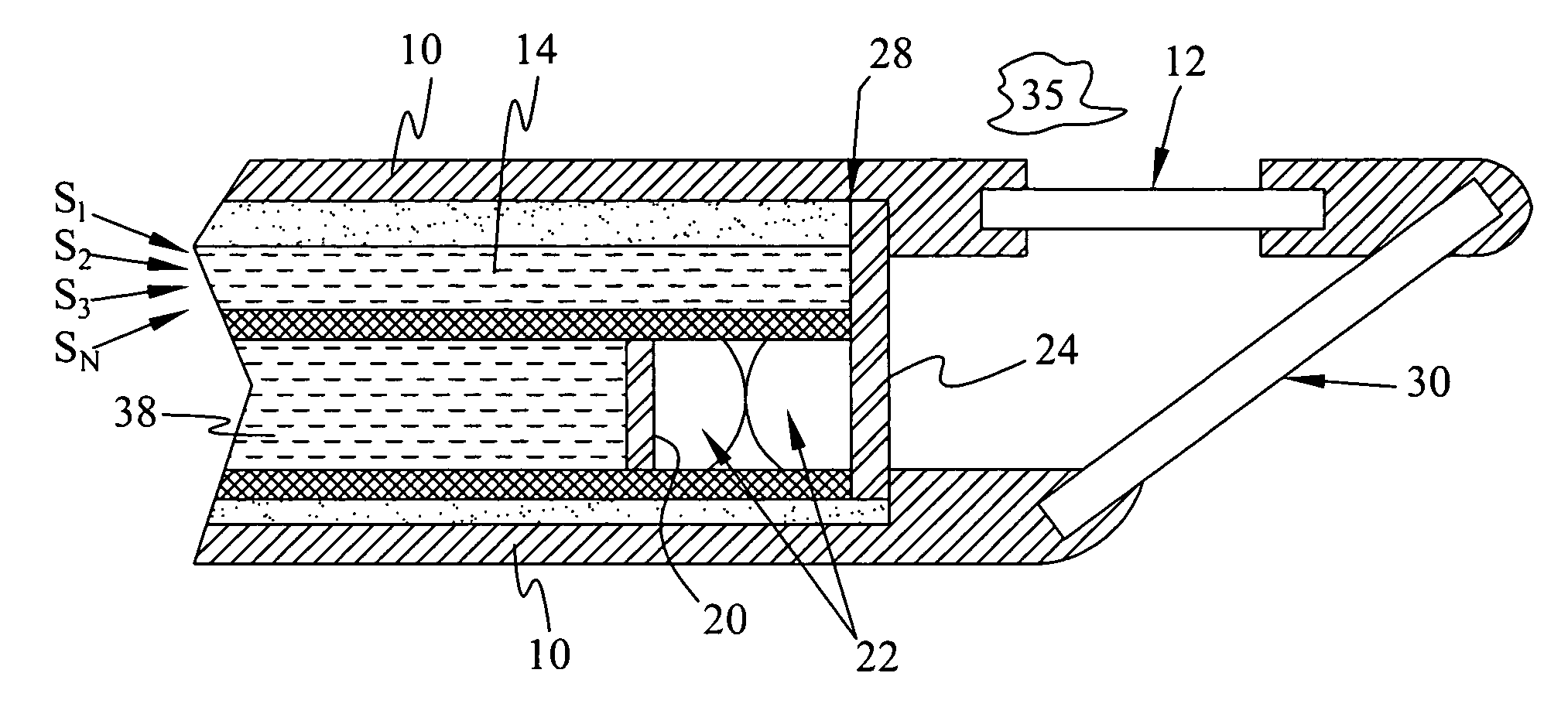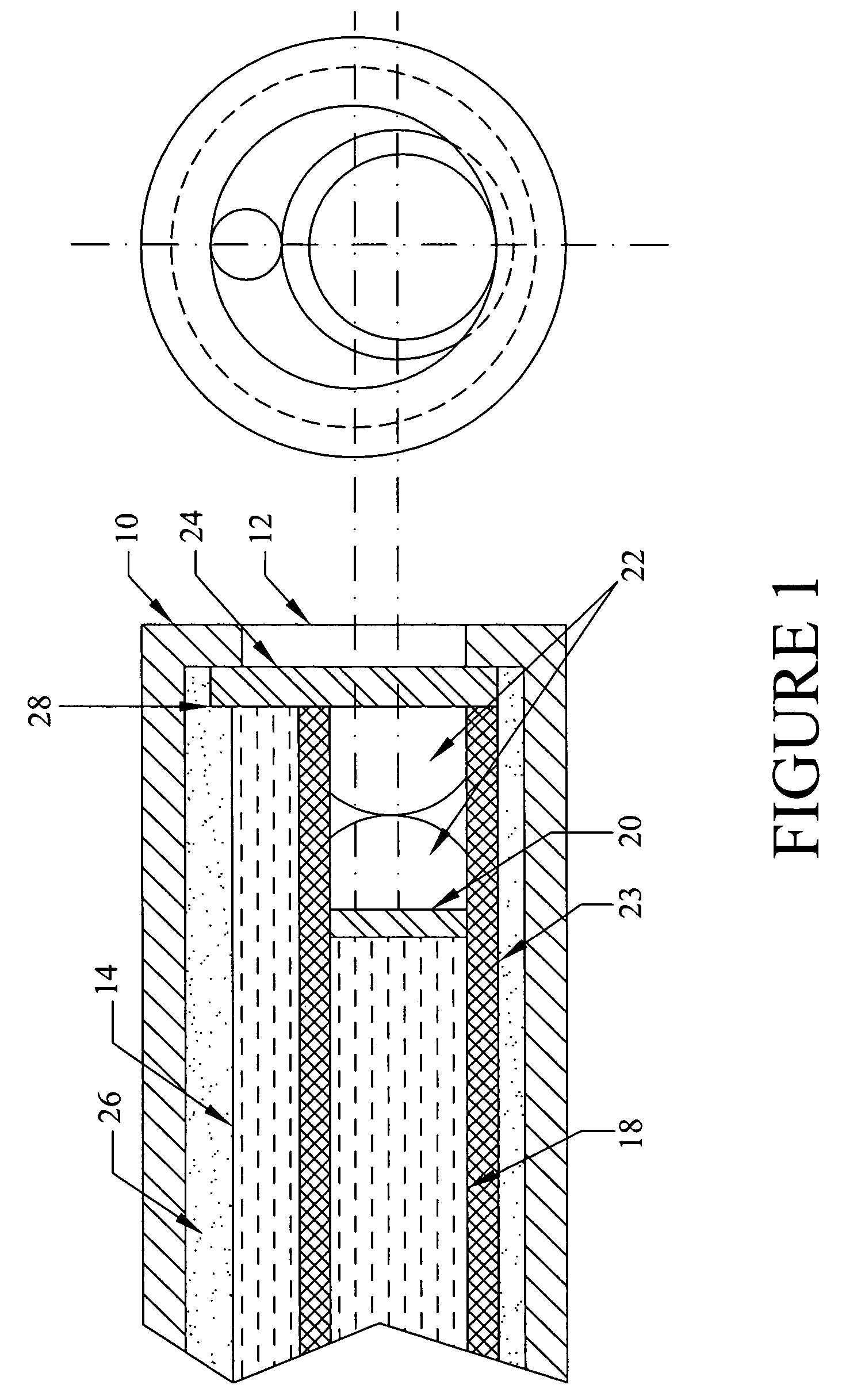Method and apparatus for fiberscope
a fiber optic probe and fiber optic tube technology, applied in the direction of optical radiation measurement, diagnostics using spectroscopy, instruments, etc., can solve the problems of limited application of chemical imaging outside the research laboratory, blood and bodily fluids limiting the viewing, identification and ability to perform in vivo optical measurements of suspect areas, and the limitations of the raman fiber optic probe devi
- Summary
- Abstract
- Description
- Claims
- Application Information
AI Technical Summary
Benefits of technology
Problems solved by technology
Method used
Image
Examples
Embodiment Construction
[0035]The Raman chemical imaging fiberscope combines in a single platform a laser beam delivery system to irradiate samples for Raman spectroscopy, an incoherent fiber optic bundle to deliver white light illumination and a coherent fiber bundle suitable for Raman spectral collection, Raman image collection and digital video collection.
[0036]The distal end of the fiberscope is shown in cross-section in FIG. 1. The external housing 10 surrounds the inner core of the fiberscope. The outer jacket 10 is mechanically rugged and immune to hostile sampling environments. The compression tube 23 holds the fibers 18, the filter 24 and lens 22 in alignment. At the distal end of the fiberscope is window 12. This window is, in one embodiment, composed of quartz, diamond or sapphire and is used as an optically transparent boundary separating the sample environment from the optical components in the probe. In an alternative embodiment, the other biocompatible material such as plastics, glass or sem...
PUM
 Login to View More
Login to View More Abstract
Description
Claims
Application Information
 Login to View More
Login to View More - R&D
- Intellectual Property
- Life Sciences
- Materials
- Tech Scout
- Unparalleled Data Quality
- Higher Quality Content
- 60% Fewer Hallucinations
Browse by: Latest US Patents, China's latest patents, Technical Efficacy Thesaurus, Application Domain, Technology Topic, Popular Technical Reports.
© 2025 PatSnap. All rights reserved.Legal|Privacy policy|Modern Slavery Act Transparency Statement|Sitemap|About US| Contact US: help@patsnap.com



